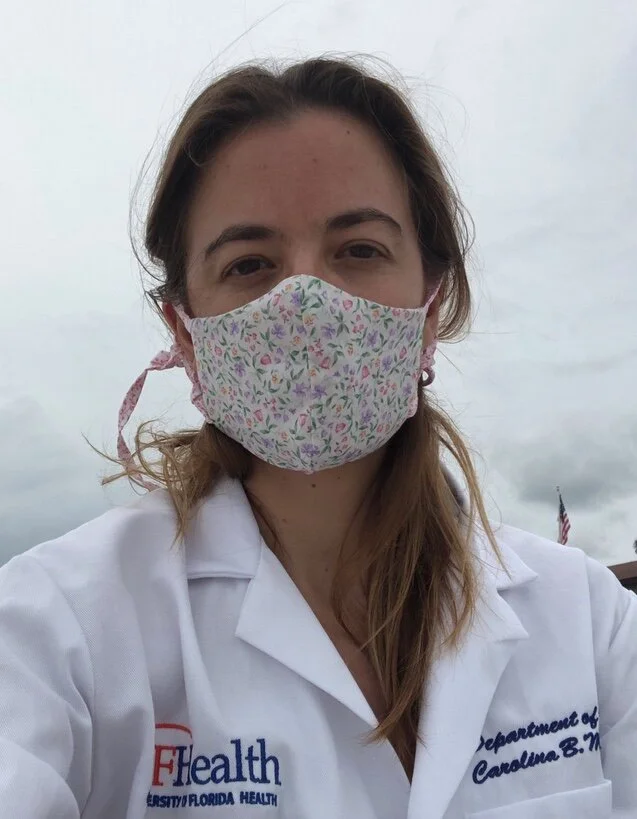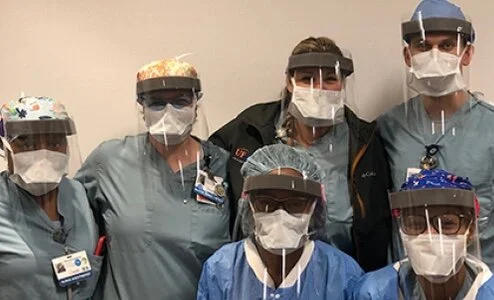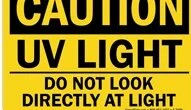Cloth versus surgical masks for protection against COVID-19: An interview with an expert
Dr. Carolina Maciel, University of Florida
Wearing masks has become one of the most frequent topics we are asked about in Parkinson’s and other neurological disease patients. Should I wear a cloth mask or a surgical mask? Suprisingly, there is little data on this issue in the COVID era. Tthis week the Annals of Internal Medicine an article on the topic was retracted. We interviewed an expert in the field to get his opinion on the controversy and also to obtain some practical recommendations on masking.
Who is Paul Davenport, PhD.?
The University of Florida Norman Fixel Institute for Neurological Diseases has an expert on respiratory physiology, Paul Davenport, who has great experience in this area. Paul W. Davenport received his BA degree in Chemistry from the Greenville College, Greenville, IL, in 1973. He received his PhD degree from the Department of Physiology and Biophysics at the University of Kentucky, Lexington, KY, in 1980. He was a Research Associate at the Department of Physiology and Biophysics, University of Texas Medical Branch, Galveston, TX in 1981. In 1981, he joined the faculty at the University of Florida in the Department of Physiological Sciences where he is currently a Distinguished Professor. He has taught respiratory physiology to medical, veterinary and graduate students for over 33 years and has a prolific research career including serving as a co-inventor of the EMST device for Parkinson’s swallowing.
Paul Davenport, PhD, Professor University of Florida
Surgical Masks versus Cloth Masks: What is the Difference?
There is an extensive older literature on use of facemasks and shields with reference to influenza virus and bacteria. I was recently asked by a layman friend about cloth vs surgical facemasks. I did a search of the literature, CDC and FDA- and I assembled this using my research experience with facemasks and breathing valves.
Most surgical masks have large pore sizes hence "in general, surgical masks filter particles to approximately 5 microns in size, approximately 77% of the particulate matter in surgical smoke is 1.1 microns and smaller"; further, from the FDA, "While a surgical mask may be effective in blocking splashes and large-particle droplets, a face mask, by design, does not filter or block very small particles in the air that may be transmitted by coughs, sneezes, or certain medical procedures. Surgical masks also do not provide complete protection from germs and other contaminants because of the loose fit between the surface of the face mask and your face."
Surgical masks (properly worn) are reported to be effective in filtering most of the aerosol droplets exhaled from another individual. The droplets would presumably contain most of the coronavirus.. Risk assessments are difficult to analyze and results are varied. With normal breathing, the surgical masks will reduce the transmission of particles. However, with sneeze and cough through the mask, the transmission is relatively ineffective.
If the wearer is in close proximity to the particle emitter, then the inhaled transmission will be greater due to particle concentration and airflow movement driving the particles.
If the wearer is inhaling strongly (such as during exercise), they will "suck in" more particles.
If the emitter is releasing small particles, then the mask is relatively ineffective.
Big particles will be filtered. Filtering big particles is, however, advantageous because these particles will have a greater amount of virus in the infected emitter.
Is having a mask better than no mask?
Having a mask is better than no mask. If both people wear a mask, then the emitter particles get partially filtered in the emitters mask reducing the aerosol concentration. Then with the receiver wearing a mask, the filtering will further reduce the inhalation of emitter exhalate. Hence, it has been reported that when both people were wearing a mask it reduced the probability of transmission to about 1-3%.
What is more effective surgical or cloth masks?
Surgical masks are more effective than cloth masks.
"A randomized trial comparing the effect of medical and cloth masks on healthcare worker illness found that those wearing cloth masks were 13 times more likely to experience influenza-like illness than those wearing medical masks.""
There is also some evidence that surgical masks can be effective at reducing the overall particle emission from patients who have multidrug-resistant tuberculosis, cystic fibrosis, and influenza. The latter found surgical masks decreased emission of large particles (larger than 5 µm) by 25-fold and small particles by threefold (from flu-infected patients)."
What about faceshields?
The recommendation has been that faceshields can also be protective. Faceshields require particles to flow in a circuitous path causing impact of the particles on surfaces. The shields also prevent virus from entering the mucus membranes around the eyes. Many practitioners performing procedures use a mask and a faceshield.
What about contamination of the outer part of the mask?
One issue with virus transmission is that there can be contamination of the outer surface of the mask. If the mask filters as designed, then particles are contained on the outer surface of the mask. When the wearer removes the mask, touching the outer surface has the potential of contaminating the hands and thus this can contaminate the individual.
I myself recently ordered an UV cosmetics bag that we will use to sterilize our masks when not in use. UV light has been reported to destroy the virus.
What about breathing difficulty when wearing a mask?
Another major issue with a facemask has been subjective breathing difficulty. The masks increase the airway resistance generating a breathing load (on the wearer). This situation results in an increase in the breathing effort iwhich causes a negative, aversive sensation usually reported as breathlessness. Thus, individuals will attempt to keep the work of breathing low and select masks that require less breathing effort. However, this means the masks will have a larger pore size and a reduced filtering capacity (i.e. not as good for COVID).
What about the face covering issue when seeing patients (I can’t see the clinician)?
One of the big clinical problems I have heard about is "face covering" during an in person examination. It is disconcerting for patients to not see the face of the individual they are talking to. This is why there has been an effort to make facemasks with clear shields over the mouth area to let the individual see the lips. Face shields are great for better facial observation, but less effective in air filtering.
What is your take home message for masks during COVID?
In my opinion, wearing a surgical mask is worthwhile. Wearing a cloth mask is also worthwhile. However, the assumption that we are "safe" from infection is naive. We are safer but not completely safe. It can be hard to breathe through the mask material, though this unpleasant feeling may mean that it is working.
To read more books and articles by Michael S. Okun MD check Twitter @MichaelOkun and these websites with blogs and information on his books and http://parkinsonsecrets.com/ #EndingPD #ParkinsonPACT #Parkinsonsecrets and https://www.tourettetreatment.com/












